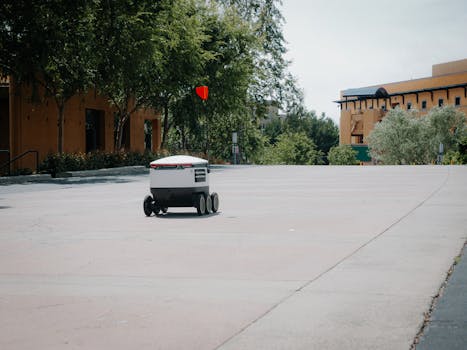
Smart Cities: Urban Trends for 2025
Introduction to Smart Cities
Smart Cities: Urban Trends for 2025 are revolutionizing the way we live, work, and interact with our surroundings. As the world becomes increasingly urbanized, cities are leveraging technology and innovation to create sustainable, efficient, and livable environments. In this article, we will explore the latest trends shaping the future of smart cities in 2025.
Section 1: Sustainable Energy and Environment
One of the primary focuses of smart cities is sustainable energy and environment. Cities are adopting renewable energy sources, such as solar and wind power, to reduce their carbon footprint. Additionally, smart grids and energy management systems are being implemented to optimize energy distribution and consumption. For example, the city of Copenhagen has set a goal to become carbon neutral by 2025, and is investing heavily in wind power and green infrastructure.
Green Buildings and Urban Planning
Smart cities are also prioritizing green buildings and urban planning. Green buildings are designed to be energy-efficient and sustainable, with features such as green roofs, solar panels, and rainwater harvesting systems. Urban planning is also being reimagined, with a focus on creating pedestrian-friendly and bikeable cities, reducing the need for personal vehicles and promoting a healthier lifestyle.
Section 2: Transportation and Mobility
Another key aspect of smart cities is transportation and mobility. Cities are investing in innovative transportation systems, such as electric and self-driving vehicles, to reduce congestion and pollution. Additionally, smart traffic management systems are being implemented to optimize traffic flow and reduce commute times. For example, the city of Singapore has launched a smart traffic management system, which uses real-time data and analytics to optimize traffic signal timing and reduce congestion.
Public Transportation and Alternative Modes
Smart cities are also prioritizing public transportation and alternative modes of transportation. Cities are investing in efficient and reliable public transportation systems, such as buses and trains, to reduce the need for personal vehicles. Additionally, alternative modes of transportation, such as bike-sharing and car-sharing programs, are being promoted to encourage a more sustainable and active lifestyle.
Section 3: Technology and Innovation
Technology and innovation are at the heart of smart cities. Cities are leveraging data analytics, IoT sensors, and other technologies to create more efficient and responsive infrastructure. For example, the city of Barcelona has implemented a smart parking system, which uses sensors and data analytics to guide drivers to available parking spots, reducing congestion and pollution.
Smart Infrastructure and Data Analytics
Smart cities are also investing in smart infrastructure, such as smart grids, smart water management systems, and smart waste management systems. These systems use data analytics and IoT sensors to optimize performance and reduce waste. Additionally, cities are using data analytics to gain insights into citizen behavior and preferences, allowing for more informed decision-making and policy development.
Section 4: Conclusion and Future Outlook
In conclusion, smart cities are revolutionizing the way we live, work, and interact with our surroundings. From sustainable energy and environment to transportation and mobility, technology and innovation are shaping the future of urban development. As we look to 2025 and beyond, it is clear that smart cities will continue to play a critical role in creating a more sustainable, efficient, and livable world.




